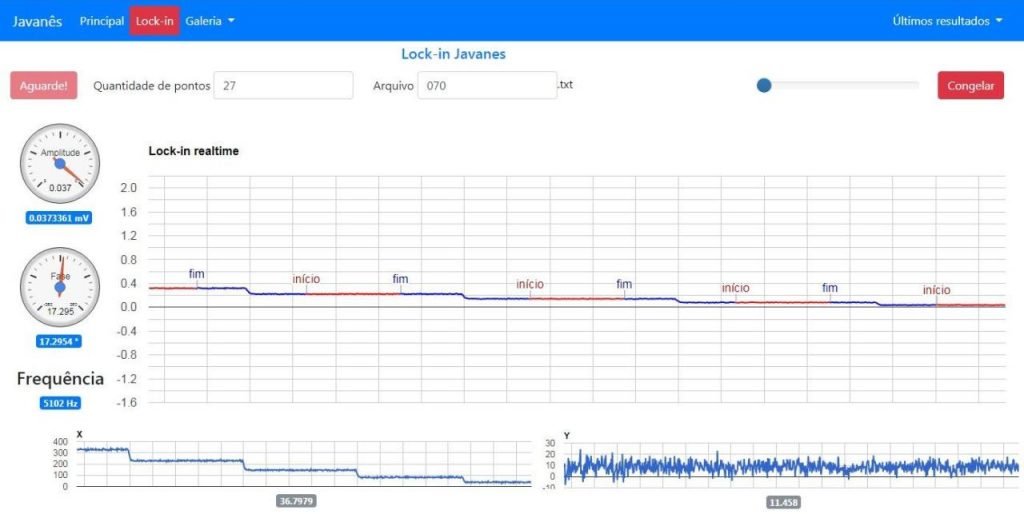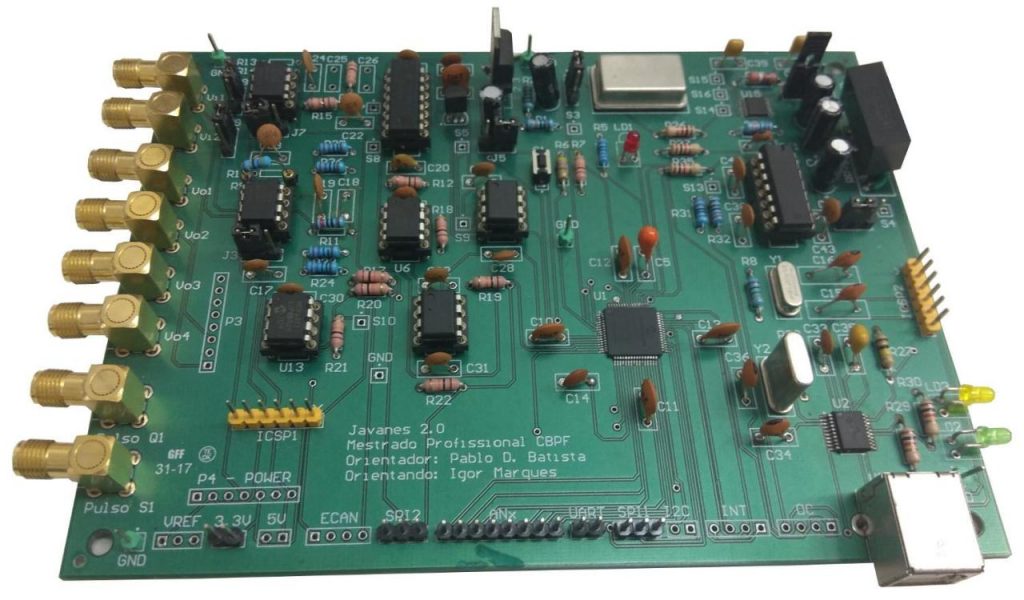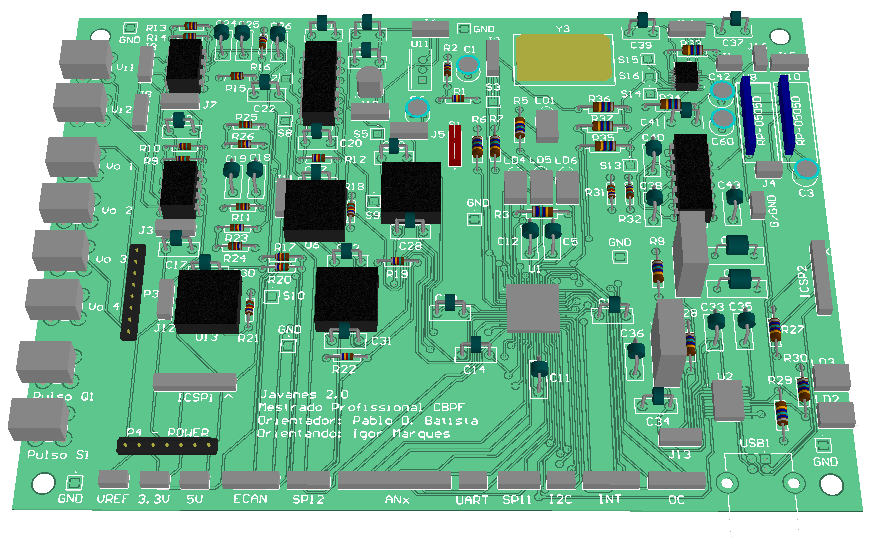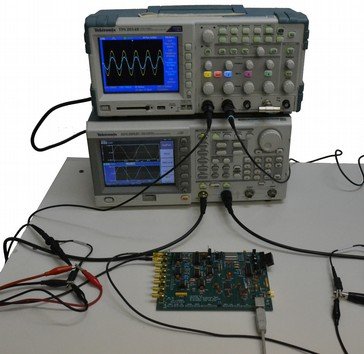Brazilian Center for Physical Research (CBPF)
Rio de Janeiro, Brazil

Lockin Amplifier Web Interface 
Design end plate 
Simulation of the project in Altium 

Advisor: Dr. PABLO DINIZ BATISTA
DEVELOPMENT OF A MICROCONTROLLER-BASED DIGITAL LOCK-IN AMPLIFIER
Summarizes
The Lock-in amplifier is an excellent tool to measure signals at levels below white noise levels, even intrinsic noise. It allows to separate signals in phase and quadrature, providing valuable information on different physical quantities of the measured signals. Currently in the market there are several manufacturers offering both analog and digital Lock-in.However, none with national brazilian technology, making difficult to acquire this type of instrument due to bureaucratic processes and high import costs. This dissertation aims to develop a Lock-in Amplifier, based on microcontroller, under Open-Source Hardware model, focused on scientific instrumentation. For this, the proposal is to upgrade a data acquisition board, previously developed by the group. Replacing mainly the microcontroller for the dsPIC33FJ128GP706A. Implementing a symmetric source ±5V from 5V of USB port. By inserting an “offset” into the input signal allowing negative voltage measurements. In addition to the installation of other features such as DDS, DACs, communication ports and access to different board voltages. Making this equipment more flexible for other applications in scientific instrumentation beyond executing a Lock-in application. Finally, this work describes in detail different steps, among them, the simulation of the Lock-in made in the computer and the development of two prototypes. In addition to the execution of optoelectronic experiment for the measurement of glucose concentration, rotation of the polarization plane of the light, in order to validate the application of the Lock-in Amplifier.
Keywords: Lock-in Amplifier, Microcontroller, DMA, Open-Source Hardware, Scientific Instrumentation, Data Acquisition.
Download the dissertation
Download Javanese Manufacturing Files
Schemat[ p1.pdf ]ic[ p2.pdf ] [ p3.pdf ]
PCB Final[ PCB.pdf ]